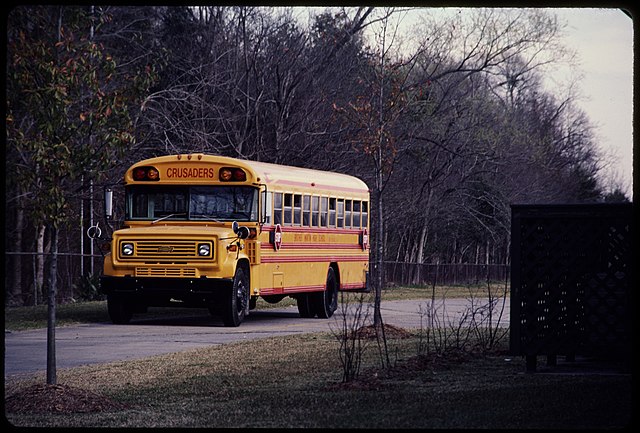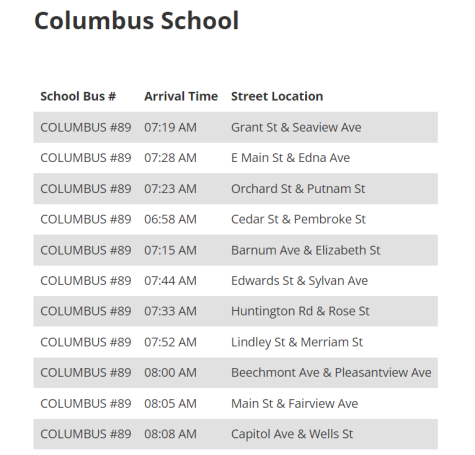Ride and Joy – discussing suburban sprawl and equal opportunities.
Uncredited for National Park Service, Wikimedia Commons
Early bus times, the great resignation, all contributing to a complicated situation for high school-going teenagers. But what is at the root of these problems? Suburban sprawl.
The US Census Bureau regards South Jordan as the fifth fastest growing city in the United States. South Jordan has outpaced almost every other city in Utah, amassing a population of eighty-two thousand people within a decade. But behind food trucks and lakeside homes, the burgeoning housing crisis in South Jordan has made the city increasingly unaffordable. The question is, will this suburban sprawl eventually encroach on district resources?
As the housing crisis unfolds, several interconnected problems become apparent. Just in one year, the housing price in South Jordan has increased by 18.9%, with the median house cost being $752,310. It is expanding rapidly, and the unsustainable growth of the city is shaping the environment and public education.
Suburban sprawl is defined as the spread of urban areas, at low density, into rural landscapes. Often, suburban sprawl leads to thinly distributed resources among residential areas, and transportation and school funding are the most affected.
Fagan-Small, a Utah small business expert, told the South Jordan Journal, “education is an industry facing the greatest strains as the city grows.” Right now, South Jordan is undergoing suburbanization wherein the city is projecting an outward growth into the surrounding areas, turning rural towns and villages into an urban, city-centered regional development. South Jordan fits several features of a sprawling city; (1) strip development, (2) undefined edge between rural and urban areas, and (3) automobile dependency.
Alexis Smith, a bus driver for Jordan School District, described her day-to-day schedule. From her perspectiveit is apparent that the time schedules are tight and inflexible. “I wake up at 4:45 am, but my shift starts at 6 am. I take in the high school kids and then middle school and then elementary. It’s takes me 3 hours in the morning and get done around 9am. I have a break till 12pm before I start my kindergarten route. Then at 2 pm I’ll leave to pick up and take the kids home and get done at 4 pm.” Smith also mentioned that her first bus stop is at 6:45. West Dock Street bus stop is one of the later bus stops. The bus driver for Split Rock Drive, for instance, picks up the students at 6:30.
Automobile dependency is perhaps the foremost issue that affects the Jordan District students. Long commutes because of the spaced land use create problems for the average student. According to Bloomberg, suburban sprawl and the energy crisis led to earlier start times for schools. Coordinating commute for complicated suburban routes leads to unreasonably early bus times. These matters are further complicated by income and class disparities. Low-income families dependent on public transportation due to financial constraints are disproportionately burdened by this. Additionally, there are several racial disparities in income distribution in South Jordan. These statistics make it apparent that certain races are more likely to experience unfavorable transportation conditions.
Madi Hoang, a Herriman High student, explains how busing schedules affect school performance. When asked if busing affects school performance, she said, “Yes, very much so. School already requires pretty early wake-up times so when taking the bus, there’s no way you’re not tired.” She also added, “People who struggle to pay the bills, working part-time after school, on top of all the pressures of high school, have to also deal with busing issues?”
Economic inequity, race, and public transit have historical roots. Almost 60% of Black Americans rely on public transportation. And there has been extensive research about challenges in transportation for Latinx immigrants. So it is hardly surprising that these systemic inequalities bleed into the public schooling in South Jordan and Herriman.
Another possible reason for transportation and funding differences is the tax segmentation between school districts. According to the Salt Lake Tribune, “An area such as Park City, with a comparably small student population and high property values, can generate more than three times as much tax revenue per student as Jordan School District, despite similar property tax rates.” In fact, Jordan School District was ranked as one of the least equitable districts.
image credits: bridgeportedu.net
Moreover, there is a district-wide bus driver shortage. The Great Resignation following Covid-19 has contributed to several staffing issues. However, the District is trying to tackle these issues by increasing hourly pay and benefits.
“Jordan School District has raised [our] hourly pay so that they can encourage more drivers to drive. With the bus driver shortage, it has given me extra hours to run other kids to school and the opportunity to make overtime.” – Alexis Smith
A state-wide school shortage has only made systemic inequalities more apparent. Even something as universal as transportation can reveal several truths about privilege and power. While the Jordan District rushes to find solutions to this problem, we need to keep pushing for better opportunities for all.








